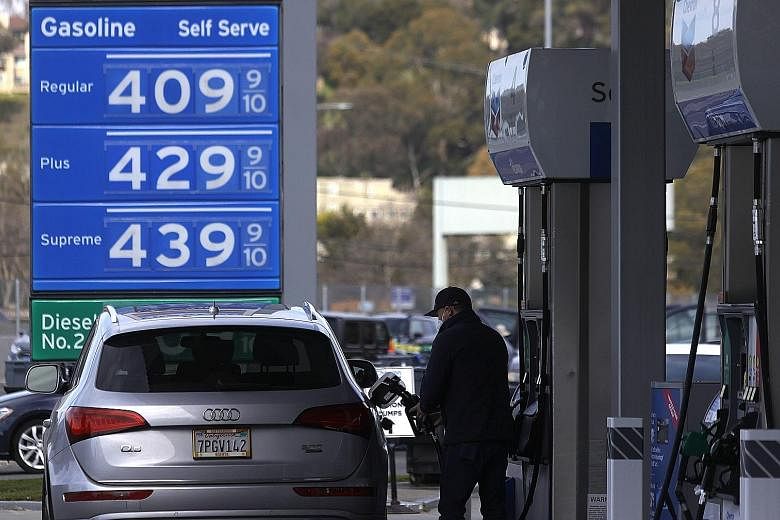WASHINGTON • United States consumer prices climbed last month by the most since 2012, adding to evidence of budding inflationary pressures as the economy reopens and demand strengthens.
The consumer price index (CPI) increased 0.6 per cent from the prior month after a 0.4 per cent gain in February, according to Labour Department data yesterday.
A jump in the cost of petrol accounted for almost half the overall March advance.
The median estimate in a Bloomberg survey of economists called for a 0.5 per cent rise.
Excluding volatile food and energy components, the so-called core CPI increased 0.3 per cent from a month earlier, the most in seven months and reflecting rising rents and auto insurance.
The monthly advance in the widely followed index led to an outsize 2.6 per cent increase in the overall CPI from March last year, when the pandemic depressed demand and pricing power.
The core measure rose 1.6 per cent from 12 months ago.
The year-over-year changes are distorted by a phenomenon known as the base effect.
The CPI, like many other economic data points, declined at the start of the pandemic amid lockdowns and widespread business closures. When compared with those depressed figures, the year-over-year increases for last month to next month will appear abnormally large.
The latest figures on consumer prices add fuel to an already heated debate about the path of inflation in the US, especially on the heels of last week's Labour Department data showing a stronger-than-expected surge in producer prices.
Mr Peter Cardillo, chief market economist at Spartan Capital Securities, said: "Inflation came in a little bit higher in terms of what the market expected.
"Prices for raw materials have skyrocketed, and (there are) supply bottlenecks for commodities.
"The bottom line is this was expected. But will it continue? I suspect it will.
"We will see higher prices as the economy reopens. The key remains wage inflation, and for now, that's nowhere in sight."
Some analysts and economists argue that a wave of pent-up demand paired with trillions of dollars in government spending will spur a sustained upward movement in inflation.
Federal Reserve officials, including chairman Jerome Powell, have said any meaningful increase in prices will likely prove temporary.
Amid supply chain bottlenecks, supply shortages and surging input costs, producers are already feeling the pinch of rising costs.
While not all cost increases will be pushed through to consumers - given a variety of different measures firms can take to offset costs - sustained pressures in the production pipeline raise the risk of an acceleration in consumer inflation.
Recent survey data highlighted developing cost pressures.
The Institute for Supply Management's latest figures showed that more than half of service providers reported paying higher prices last month, the largest share since 2011.
The institute's manufacturing survey showed that about 72 per cent of manufacturers said the same - the second-most since 2008.
Recently, some company executives have mentioned plans to raise prices for their products.
BLOOMBERG, REUTERS

